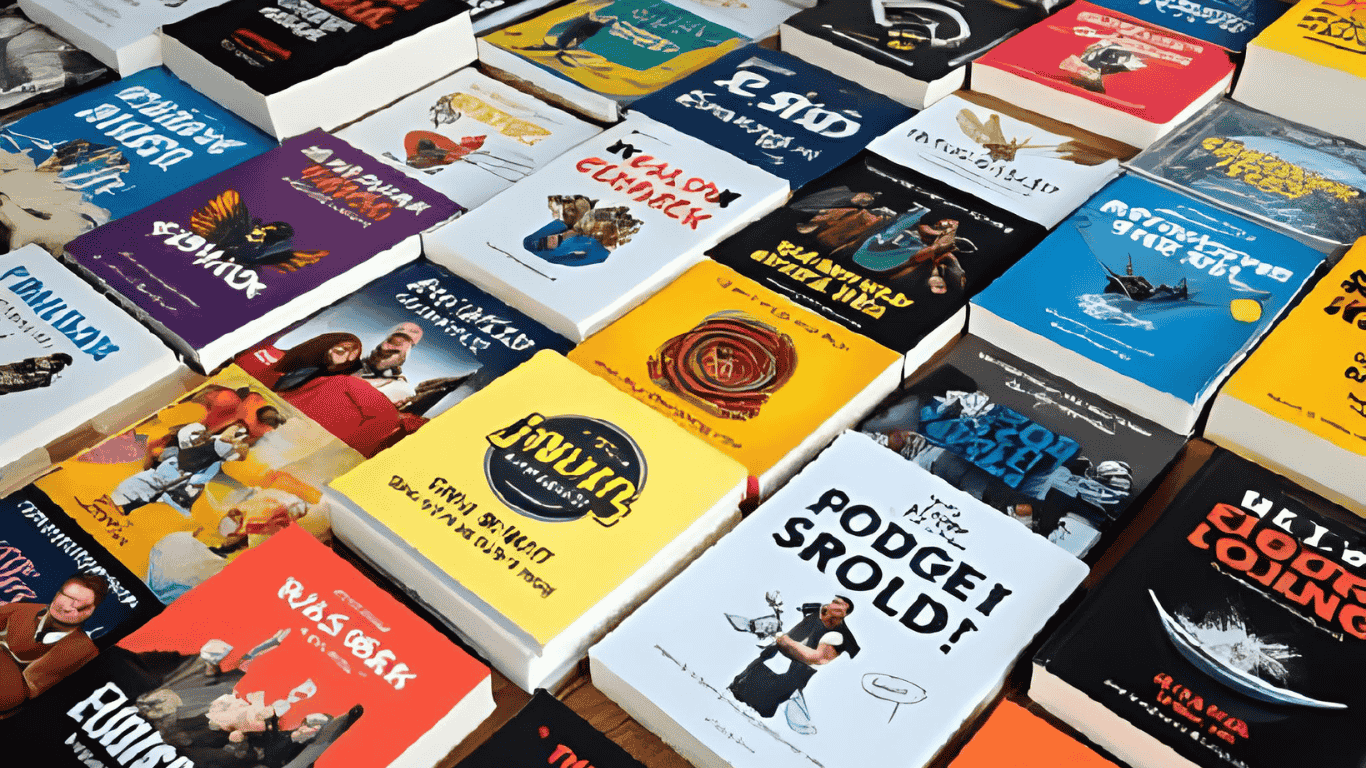Blog details
1.1 The Rise of Arabic Digital Books in the Modern Era
Over the past two decades, the Arab world has witnessed an unprecedented digital boom, clearly reflected in the publishing and reading sector. Books are no longer confined to library shelves or yellowed paper pages; instead, they are now available on phone and computer screens in PDF format—forming a bridge that connects the Arab reader with knowledge wherever they may be. This transformation is not merely a technical shift but a cultural revolution that has reshaped generations’ relationship with reading.
1.2 Why Do Readers Prefer Arabic Books in PDF Format?
Many readers prefer PDF files because they are easy to store and distribute, while maintaining precise formatting of texts and images. PDFs also provide flexibility to switch between devices without losing content or distorting layout. Additionally, they are often available for free, making them an ideal choice for students, researchers, and casual readers alike.
1.3 The Role of Technology in Expanding Access to Arabic Literature and Knowledge
Technology has removed geographical and cultural barriers. With just one click, a reader from the Atlantic to the Gulf—or even abroad—can access vast Arabic digital libraries. Smart applications and e-reading platforms have amplified this role, making Arabic culture more widespread and diverse.
Understanding Arabic PDF Books
2.1 What Makes PDF Format Stand Out Compared to Other Digital Formats?
PDF is known for its stability—it preserves fonts and formatting exactly as intended by the author or publisher. Unlike some other formats, it is not easily affected by file conversion or transfer. This has made it the preferred format for academic and professional publishing.
2.2 The Journey of Arabic Books from Print to Digital
From leather manuscripts to the traditional printing press and now modern digitization, Arabic books have undergone a long journey. The shift from paper to PDF was not just a change in medium but an opening of new possibilities in distribution, preservation, and accessibility.
2.3 Advantages of Choosing PDF for Arabic Reading
PDF allows fast keyword searches in Arabic texts, the addition of notes and highlights, and even password protection for content. These features have made it an effective tool for students, researchers, and everyday readers.
Categories of Arabic PDF Books
3.1 Classical Novels and Timeless Arabic Literature
From One Thousand and One Nights to the works of Naguib Mahfouz, digital editions revive both classical and modern Arabic literature.
3.2 Contemporary Novels and Short Stories
Young authors have found PDF to be a platform for publishing free from the constraints of traditional publishing houses.
3.3 Religious and Islamic Books in PDF
Including Quranic exegesis, Hadith collections, Fiqh, and the Prophet’s biography—these are among the most sought-after resources.
3.4 Educational and Academic Resources
University textbooks, scientific references, and research papers available for students at various institutions.
3.5 Self-Development and Personal Growth Books
Covering topics such as motivation, positive thinking, and personal planning.
3.6 Arabic Poetry—Classical and Modern
From Al-Mutanabbi to Mahmoud Darwish, Arabic poetry is now elegantly accessible in digital format.
3.7 Children’s Stories and Illustrated Educational Books
Colorful picture books designed to encourage early reading habits among young children.
Key Sources for Accessing Arabic PDF Books
4.1 Leading Arabic Digital Libraries
Curated and licensed content such as King Fahd National Library and Kitabi website.
4.2 Free Download Websites for Arabic Books
Open-source libraries serving millions of users.
4.3 Global Platforms with Arabic Content
Such as Google Books, offering a mix of free and paid titles.
4.4 Academic Databases in Arabic
Dedicated to researchers and students with peer-reviewed content.
4.5 Mobile Applications for Arabic Books
Apps like Abjjad and Kutubee, combining flexibility with variety.
Legal and Ethical Considerations
5.1 Copyright Laws in the Arab World
Though they vary by country, they all agree on protecting authors’ rights.
5.2 The Difference Between Legal and Pirated Copies
Legal copies support authors and publishers, while pirated ones harm the cultural industry.
5.3 Supporting Authors While Benefiting from Free Copies
Readers can purchase original editions or donate through platforms to sustain creativity.
Benefits of Reading Arabic PDF Books
6.1 Accessibility Anytime, Anywhere
Perfect for reading while traveling, studying, or during leisure.
6.2 An Economical and Eco-Friendly Alternative
Digital books reduce paper consumption and printing costs.
6.3 Easy Search, Highlighting, and Note-Taking
Enhances the efficiency of studying and research preparation.
6.4 Building an Organized Personal Digital Library
Readers can manage hundreds of books without worrying about physical space.
Challenges Related to Arabic PDF Books
7.1 Quality and Formatting Issues in Some Files
Unreadable texts or missing pages may occur.
7.2 Limited Availability in Certain Fields
Some disciplines still lack sufficient Arabic digital content.
7.3 Compatibility Problems with Devices and Software
Large files may slow down downloads or strain devices.
7.4 Risks of Downloading from Unsafe Sources
Readers may face malware or data breaches.
Accessing Reliable Sources
8.1 Verifying the Credibility of Websites or Platforms
It’s best to choose well-known, reputable sites.
8.2 Relying on Reviews and Reader Feedback
User experiences help in evaluating content quality.
8.3 Using Security Tools While Downloading
Antivirus software and firewalls are essential.
8.4 Supporting Legal Arabic Initiatives
Promotes a healthy digital cultural environment.
Best Arabic Digital Libraries and Websites
9.1 Noor Digital Library
One of the largest free Arabic PDF collections.
9.2 Hindawi Foundation for Publishing
Offers free Arabic works and translations.
9.3 Specialized Arabic PDF Websites
Covering a wide range of categories.
9.4 Arab Publishers Offering Free Copies
Some provide free versions as promotions for paid titles.
Leading Global Platforms Offering Arabic PDF Books
10.1 Project Gutenberg
Among the earliest pioneers of digital publishing.
10.2 Internet Archive
Preserves millions of books and documents.
10.3 Open Library
Allows borrowing and reading Arabic digital books.
10.4 Google Books
A massive search engine for both Arabic and international works.
Educational Applications of Arabic PDF Books
11.1 Free School and University Textbooks
Open resources supporting all stages of education.
11.2 Open Academic Sources
Tailored to university researchers and study centers.
11.3 The Growing Role of Digital Learning
Becoming an essential complement to traditional education.
11.4 The Impact of Digital Libraries on Arab Students
Reduced educational costs while expanding access to knowledge.
Self-Development Books in PDF
12.1 Motivation and Personal Inspiration
Encouraging self-confidence and resilience.
12.2 Management and Entrepreneurship Books
Offering practical tools for professional growth.
12.3 Technical Skill Development Resources
Keeping up with digital labor market demands.
12.4 Health, Fitness, and Lifestyle Books
Promoting healthier living habits.
PDF Books for Children and Youth
13.1 Illustrated Educational Stories
Fostering a love of reading from an early age.
13.2 Early Reading Skill Development Books
Designed to strengthen comprehension abilities.
13.3 Free Educational Resources and Activities
Blending entertainment with education.
13.4 Platforms Offering Safe Children’s Content
Providing trustworthy reading environments.
Digital Security and Data Protection
14.1 Risks While Downloading
From malware to hacking attempts.
14.2 Importance of Antivirus Software
Serving as the first line of defense.
14.3 Tips for Securing Personal Data
Using strong passwords and regular updates.
14.4 Differences Between Trusted and Suspicious Sites
Trusted ones display clear licenses; shady ones often hide identities.
Tools and Techniques for Reading Arabic PDF Books
15.1 Best Mobile Apps for Reading
Offering user-friendly interfaces with Arabic font support.
15.2 E-Readers Supporting Arabic
Devices like Kindle and Kobo now increasingly support Arabic texts.
15.3 Cloud Storage Solutions for Digital Libraries
Enabling access across multiple devices.
15.4 AI-Powered Reading Enhancements
Smart recommendations and instant text summaries.
Modern Trends in Arabic Digital Publishing
16.1 Growth of the E-Publishing Industry in the Arab World
Driven by strong youth engagement.
16.2 Shift from Print to Digital Books
A gradual transition while preserving the value of paper books.
16.3 Monthly Subscription Systems for Arabic Books
Offering large digital libraries at minimal fees.
16.4 The Future of AI in Book Recommendations
Helping readers discover content aligned with their interests.
Digital Communities for Knowledge Sharing
17.1 Specialized Forums for Arabic PDF Books
Spaces for readers to exchange and discuss titles.
17.2 Social Media Book Exchange Groups
Accelerating knowledge sharing.
17.3 Digital Reading Clubs
Hosting virtual sessions for book discussions.
17.4 Youth Initiatives to Promote Reading
Creating interactive and inspiring spaces for new generations.
Free Initiatives and Campaigns
18.1 Seasonal Campaigns and Digital Discounts
Often active during major book fairs.
18.2 Virtual Arabic Book Exhibitions
Allowing exploration of diverse books from home.
18.3 Charity Initiatives for Distributing Digital Books
Promoting reading as a universal right.
18.4 Efforts by Universities and Cultural Centers
Providing free access to academic content.
The Future of Arabic PDF Books
19.1 Expanding Multilingual Access
Offering translated content to connect Arabic readers with the world.
19.2 Integrating Augmented Reality in Reading
Transforming texts into interactive experiences.
19.3 The Role of Governments in Supporting Digital Publishing
Implementing legislation and strategies to expand accessibility.
19.4 Predictions for the Next Decade
Greater reliance on digital publishing and growth of Arabic libraries.
Conclusion
20.1 The Importance of Arabic PDF Books in Promoting Culture
A powerful tool to revive reading and spread awareness.
20.2 The Need to Uphold Copyright Laws and Protect Authors
Safeguarding the cultural industry ensures sustainable production.
20.3 Making Reading a Lifestyle for Future Generations
The digital book is the companion of the future—preserving the past while opening doors to tomorrow.

 Your guide to the best books o...
Your guide to the best books o...
 How do you get free e-books?
How do you get free e-books?
 Download books for free: A com...
Download books for free: A com...
 Learn about the most popular s...
Learn about the most popular s...